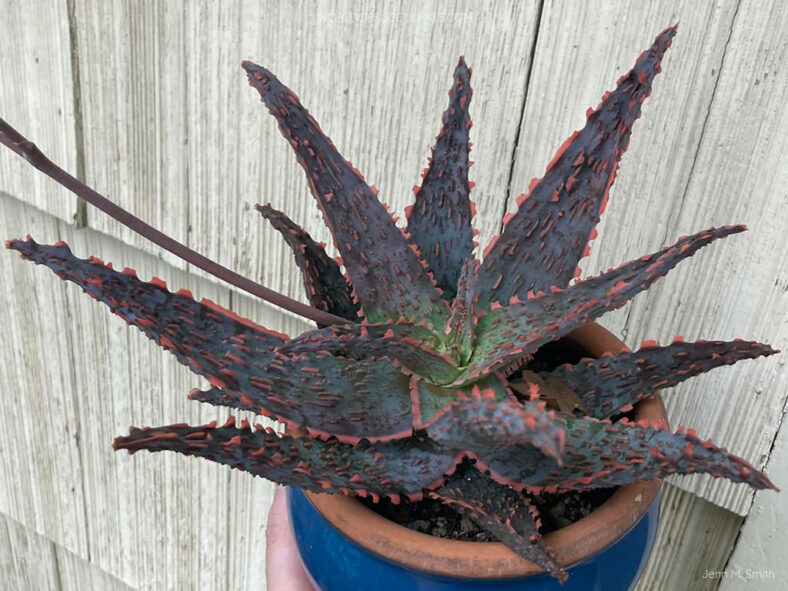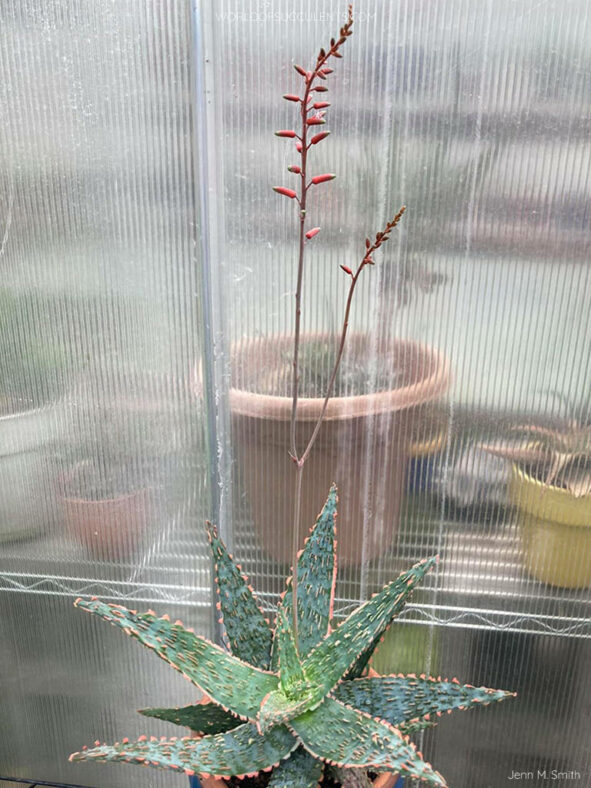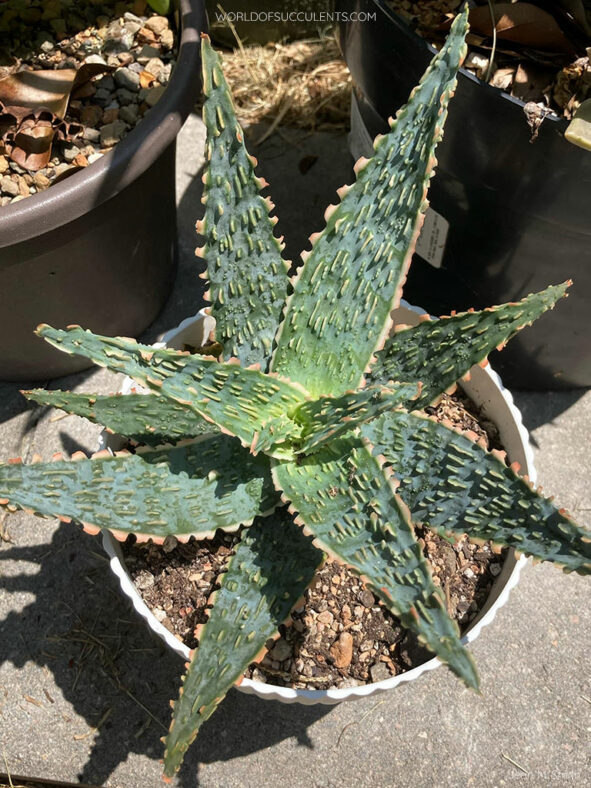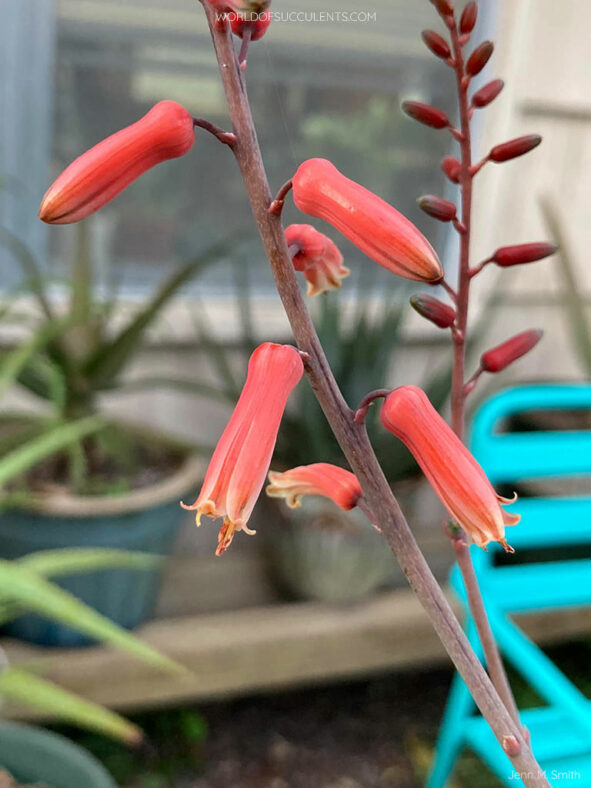According to the breeder, Aloe 'Amethyst' is a lovely bumpy and toothy rendition of Aloe's splendidness.
Scientific Name
Aloe 'Amethyst'
Scientific Classification
Family: Asphodelaceae
Subfamily: Asphodeloideae
Genus: Aloe
Origin
Aloe 'Amethyst' is an Altman Plants original hybrid created by Kelly Griffin. The parentage is unknown.
Description
Aloe 'Amethyst' is an attractive succulent that forms rosettes of gray-green leaves adorned with pinkish raised ridges and scalloped and flattened teeth along the margins. As it matures, the plant slowly produces offsets at the base, forming a small clump. The fleshy, triangular leaves take on nice purple colors in intense sunlight, hence the hybrid name.
During summer and fall, Aloe 'Amethyst' produces loose clusters of red flowers on ascending, usually branched stalks.

How to Grow and Care for Aloe 'Amethyst'
Light: When growing Aloe 'Amethyst' indoors, place it in a window with plenty of bright, indirect sunlight. Rotate the pot once or twice a week to ensure all sides of the plant receive equal lighting. Outdoors, the plant prefers light shade, especially during the hottest parts of the day.
Soil: Great drainage is essential for growing this plant because too much moisture for an extended period can cause root rot. Use commercial soil for succulents or make your own well-draining mix.
Temperature: When temperatures shift below 50 °F (10 °C), it is time to bring this plant inside. It tolerates heat fairly well but will not survive a hard frost. Aloe 'Amethyst' grows best in USDA Plant Hardiness Zones 10a to 11b, with average minimum winter temperatures ranging from 30 to 50 °F (-1.1 to 10 °C).
Watering: This plant needs regular watering but can tolerate drought conditions for short periods. Water deeply, but only when the soil is completely dry to the touch, and do not let water stand in the rosettes. Cut back on watering during the winter months.
Fertilizing: Although it generally does not require fertilizer, Aloe 'Amethyst' will benefit from extra nutrients. Use a water-soluble fertilizer diluted to half the recommended strength.
Repotting: Repot only as needed during spring. Pick a container that is one size larger and has drainage holes.
Propagation: To propagate Aloe 'Amethyst', remove the offsets from a mature plant from late spring to early summer.
Learn more at How to Grow and Care for Aloe.
Toxicity of Aloe 'Amethyst'
Aloe 'Amethyst' is not listed as toxic for people and pets.
Links
- Back to genus Aloe
- Succupedia: Browse succulents by Scientific Name, Common Name, Genus, Family, USDA Hardiness Zone, Origin, or cacti by Genus
Photo Gallery
Click on a photo to see a larger version.


